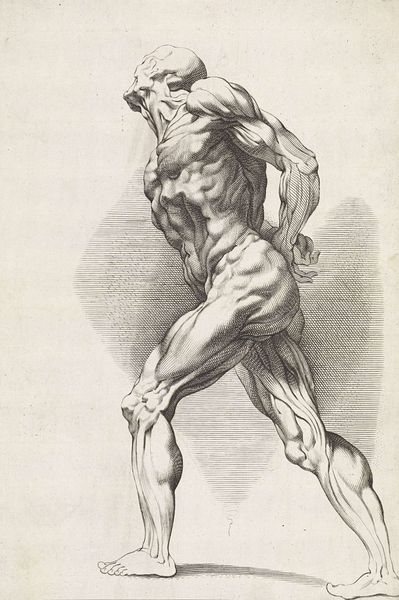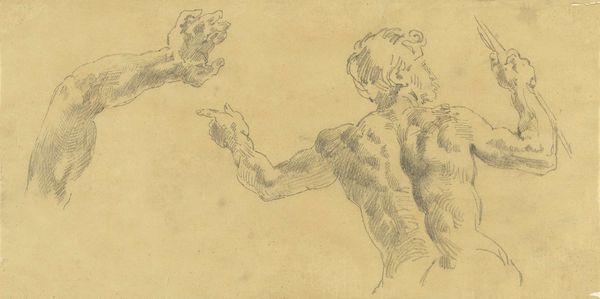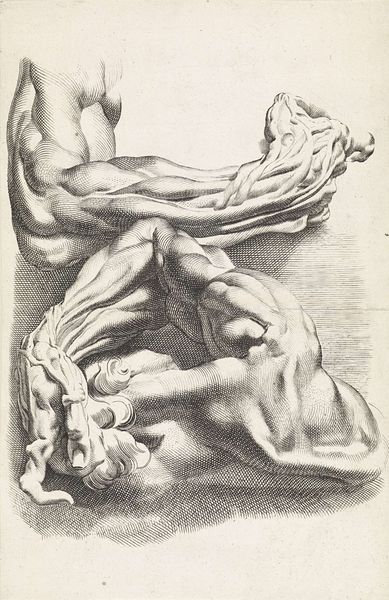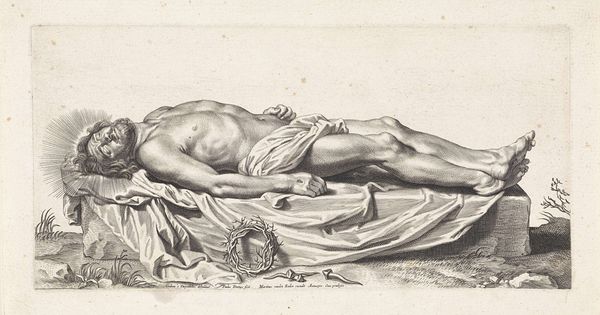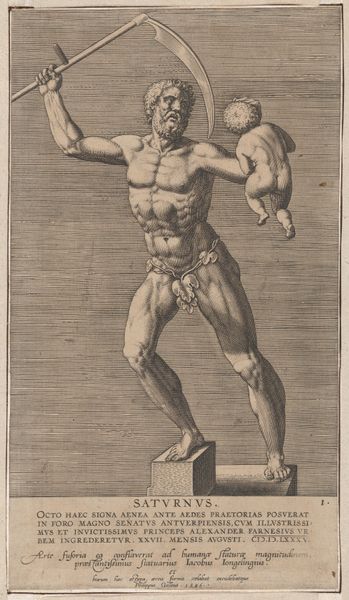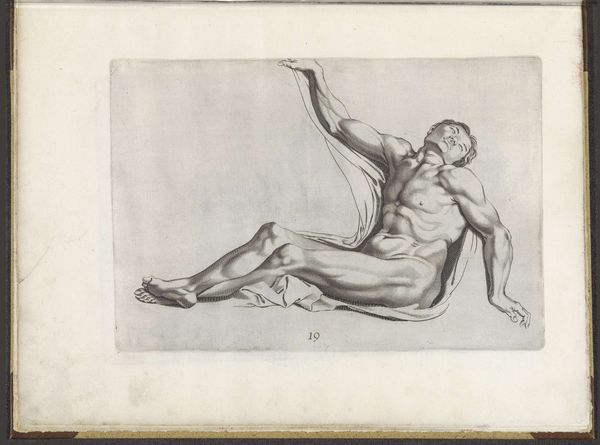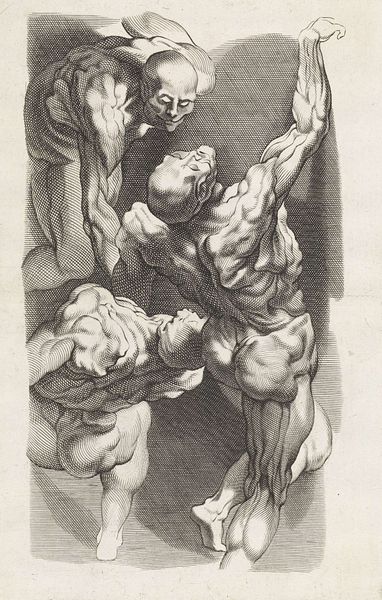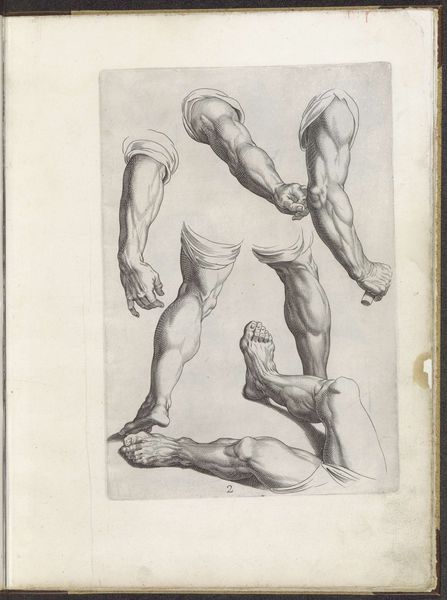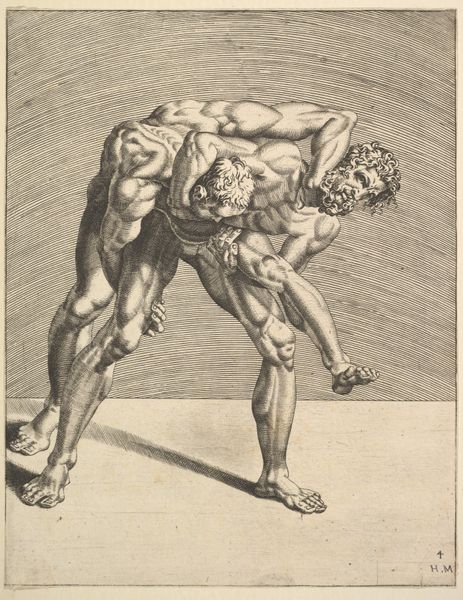
drawing, graphite
#
portrait
#
pencil drawn
#
drawing
#
baroque
#
pencil sketch
#
charcoal drawing
#
figuration
#
pencil drawing
#
graphite
#
portrait drawing
#
academic-art
#
graphite
Dimensions: height 215 mm, width 326 mm
Copyright: Rijks Museum: Open Domain
Paulus Pontius made this anatomical study of a leaning man as an engraving. It is not dated, but we can safely assume that it was made in Antwerp during the first half of the 17th century. This study belongs to the wider cultural context of the Renaissance interest in human anatomy, which had a great impact on the art of the period. Artists were eager to learn more about the structure of the human body to represent it more accurately in their works. This search for accuracy involved actual dissections, something that was taking place in universities and academies, thus becoming a part of academic training. Looking at this engraving, it becomes clear how knowledge of anatomy allowed artists like Pontius to showcase the human body, highlighting its beauty and complexity.
Comments
No comments
Be the first to comment and join the conversation on the ultimate creative platform.
